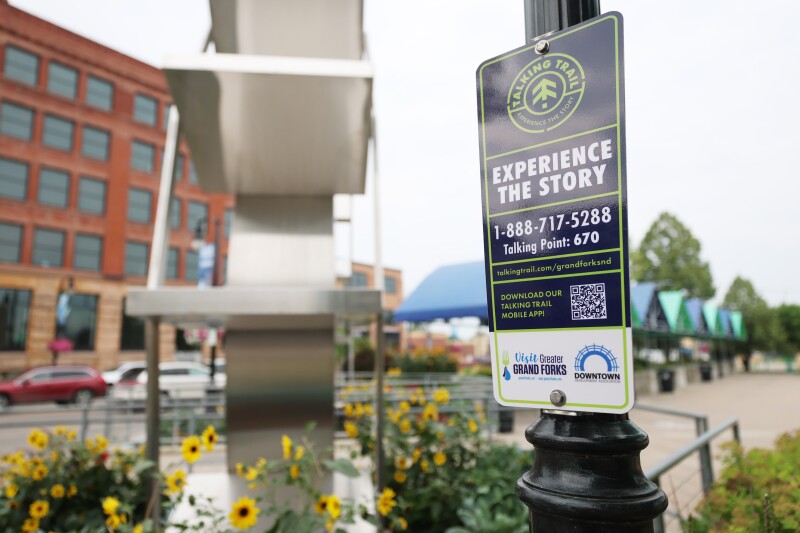Residents and visitors in Grand Forks now have a unique opportunity to explore the city’s rich history through a new initiative called Talking Trails. This innovative, self-guided walking tour is available via a free app that offers audio stories about various landmarks in the downtown area. The project is a collaborative effort between the Downtown Development Association (DDA) and Visit Greater Grand Forks.
Engaging the Community through Local Stories
According to Jill Proctor, president and chief executive officer of the DDA, the initiative aims to celebrate and share the history of downtown Grand Forks. “We just think it’s important that we continue to share the history of the things that have impacted downtown, impacted our community,” she stated. The team intentionally selected significant locations to feature, such as the iconic Sorlie Bridge and the paddle wheel in Town Square.
The Talking Trails app allows users to explore downtown at their own pace, with audio narratives attached to various historical sites. Currently, there are ten locations highlighted on the app, with plans to expand to twelve. Each site includes signage designed to be pedestrian-friendly, providing QR codes that link directly to the app for easy access.
A Personal Touch to Historical Narratives
The app boasts several user-friendly features, including a map that guides users to each location. When a user clicks on a site, the app integrates with their device’s mapping software to provide directions. Proctor emphasized the significance of personal narratives in the audio recordings, stating, “A lot of the stories were recorded by the people that they’re mostly personal about.” An example she provided is the story of the light pillars downtown, designed by David Badman, who narrates the meaning and inspiration behind his creation.
The DDA frequently receives requests for guided tours of downtown. With the introduction of Talking Trails, individuals can now enjoy self-paced exploration at any time of day. Julie Rygg, executive director of Visit Greater Grand Forks, noted, “We are always interested in looking for ways that visitors have more recreational things to do while they’re here.”
This initiative not only allows tourists to engage with the history of Grand Forks but also encourages local residents to rediscover their city. Proctor remarked, “We see so often people will stop at some of the flat memorials that are just on the North Third Street here and they’re inquisitive.” The app aims to provide answers to those curious about the historical narratives behind these landmarks.
Proctor explained that Talking Trails creates an opportunity for individuals to explore the downtown area actively. “This is an at-your-own-pace opportunity for people to stumble upon and just go out and explore and enjoy all the things that downtown has to offer,” she said.
Looking ahead, Rygg expressed hopes for positive community feedback, which could lead to further expansion of the Talking Trails project across Grand Forks and East Grand Forks. “We would like to expand and have Talking Trail sites identified throughout the area,” she added, emphasizing the potential for more storytelling opportunities.
The Talking Trails initiative represents a significant step forward in promoting local history while providing a modern, interactive experience for both residents and visitors. Through this app, Grand Forks aims to foster a deeper connection to its past and encourage exploration of its vibrant downtown.
